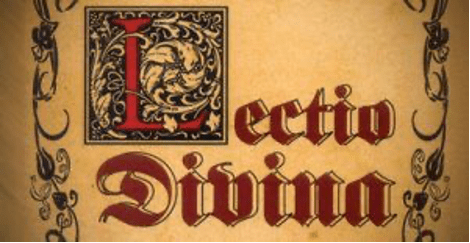Presentation of the BVM
Presentation of the BVM

As we venerate the glorious memory of the most holy Virgin Mary, grant, we pray, O Lord, through her intercession, that we, too, may merit to receive from the fullness of your grace. Through our Lord Jesus Christ, your Son, who lives and reigns with you in the unity of the Holy Spirit, one God, for ever and ever.

The Resurrected Christ depicted in the Resurrection Chapel of Saint Thomas Church
Array
(
[post_id] => 355519
[status_only] =>
[position] => above
[media_type] => unknown
[url] =>
[called_by] =>
[do_ts] =>
)
[sdg-gmp] featured_AV: [sdg-gmp] media_format:
[sdg-gmp] Multimedia FALSE
[sdg-gmp] player_status: N/A for this position
+~+~+~+~+~+~+~+
In his Homily on Scripture, Thomas Cramner ended with an exhortation for us to read Scripture in this way:
“Let us ruminate, and, as it were, chew the cud, that we may have the sweet juice, spiritual effect, marrow, honey, kernel, taste, comfort and consolation of them.”
Lectio Divina is a contemplative way of reading the Bible. It dates back to the early centuries of the Christian Church and was established as a monastic practice by Benedict in the 6th century. It is a way of praying the scriptures that leads us deeper into God’s word. We slow down. We read a short passage more than once. We chew it over slowly and carefully. We savour it. Scripture begins to speak to us in a new way. It speaks to us personally, and aids that union we have with God through Christ who is himself the Living Word.
Contact Mo. Lee-Pae for more information.
Array
(
[post_id] => 355519
[status_only] =>
[position] => below
[media_type] => unknown
[url] =>
[called_by] =>
[do_ts] =>
)
[sdg-gmp] featured_AV: [sdg-gmp] media_format:
[sdg-gmp] Multimedia FALSE
[sdg-gmp] player_status: N/A for this position
+~+~+~+~+~+~+~+


 Lectio Divina literally means “divine word” or “divine reading”. It involves choosing a short passage from the scripture, memorizing it, and then repeating it silently for some minutes. During practice, all ideas, thoughts and images related to the passage are allowed to arise spontaneously in the mind. It is somewhat in between contemplative reading and contemplative prayer.
Lectio Divina literally means “divine word” or “divine reading”. It involves choosing a short passage from the scripture, memorizing it, and then repeating it silently for some minutes. During practice, all ideas, thoughts and images related to the passage are allowed to arise spontaneously in the mind. It is somewhat in between contemplative reading and contemplative prayer.